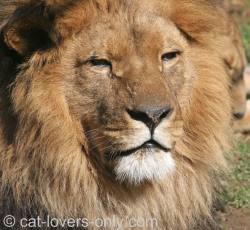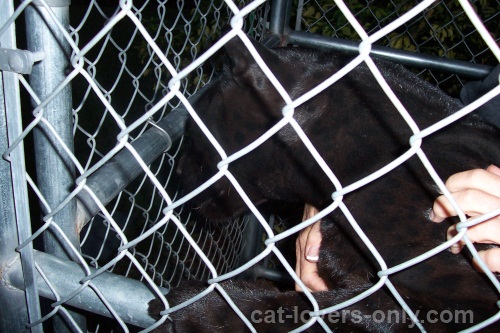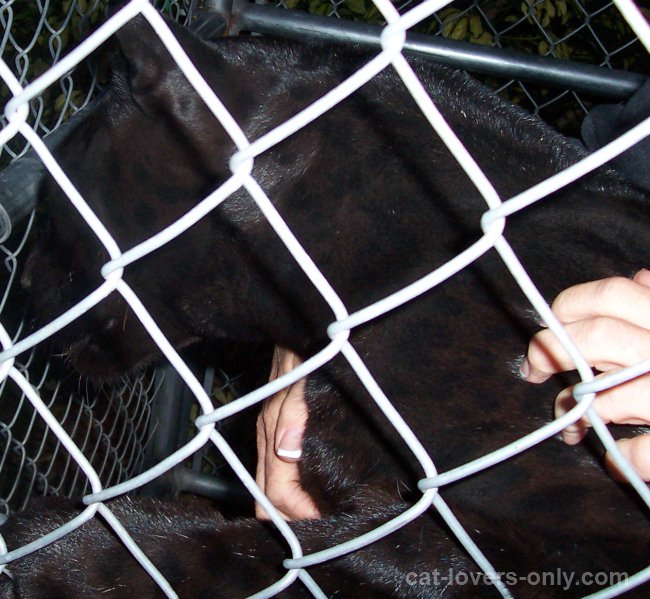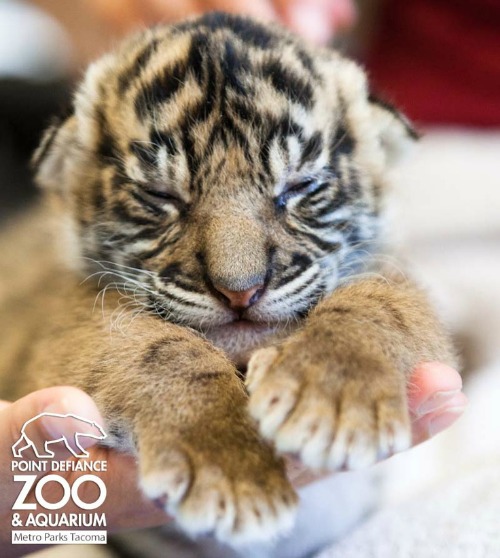The Big Cat Fact Sheet
This big cat fact sheet is a continuation of my quest to bring you up to speed on interesting factoids about felines. Here, we take a look at the great cats such as lions, tigers, and leopards.
Stealthy Feet and Powerful Claws
- All big cats are able to retract their claws when not in use, with the exception of the cheetah (which is technically not a big cat or great cat, as they're called). Cheetahs have semi-retractable claws. The extended claws help the cheetah with traction at high speeds (cheetah top speed is upwards of 70 mph).
- Big cats will often "sharpen" their claws by scratching on a post or tree.
They also really enjoy Christmas trees! I love the tiger's "chuff" in this video at 0:17...
Facts about Lions

- The lion is known as the "King of the jungle" but the African lion does not thrive in rain-forest environments. Instead, lions typically live in the open plains areas. The Asiatic lion once had a vast range, however, including jungle terrain.
- Male lions are the only cats with manes.
- Lions will drink water when it's available. In times of drought, however, they have to get the moisture they need from their food. This includes not only their prey, but plants as well. In the Kalahari desert, lions will eat Tsamma melon. And all this time you thought they only liked gazelle or wildebeest.
- Lions are unusually social within the cat family, forming groups, called prides. Although feral cats and barn cats have been known to form loose colonies, pride behavior is unique to lions.
- Lion cubs are born with spots, which typically fade with age.
- Females within prides will share responsibilities for raising each other's cubs.
- Male lions play no part in raising the cubs, and the mother will take steps to prevent the male from approaching the cubs.
- One of the major cause of injury and death to lion cubs is... adult lions!
Tigers on the Prowl
- Tigers are the largest of all the cats, with Amur (Siberian) and Bengal sub-species reaching over 500 lbs. and more.
- Tigers inhabit Asia, India, and Russia, but not Africa as some people may think. An exception to this are two tigers that were raised from cubs by humans, taught to hunt, and relocated to preserves in Africa. This is an amazing story, and Living with Tigers is a must-have DVD for the true cat lover!
- Tigers do not fear water. In fact, they are good swimmers, and often use a river or lake to cool off. They hunt very well in water. In fact, they often out maneuver their prey in the water.
- Tigers are typically solitary, and are rarely seen together in a group.
- The tiger's only real threats are other tigers, and humans.
- The tiger's usual hunting strategy is to stalk and ambush its prey. This is in contrast to the lion or cheetah, both of which often chase prey in the open field.

Leopards are Tree Climbers
- Leopards find safety in trees and use them as tools (I suspect scientists would disagree with using the term tool). They often sleep in them, sometimes hunt in them, keep their cubs safe in them while they are away, and usually use them to store a fresh kill.
- African leopards are such good climbers that they have been caught on film snatching a baboon out of a tree and making a meal out of it.
- Just like house cats, leopards sometimes having trouble getting down from a tree. The backward pointing claws are best for going up! (Many house cats feel more at home when they can climb to a high spot to survey their territory. Various types of cat climbing furniture are available to help satisfy this need in your cat).
- Leopards may use both the ambush method of hunting (like tigers), or the chase and dash method (more like cheetahs). Leopards are solitary animals, and almost always hunt at night.
- Black panthers are... not! This is an often misunderstood fact about the big cats. The animal referred to as a black panther is actually a leopard with an almost black coat (more on this below).
The Black "Panther"
Check out this magnificent creature, the black panther in the video below...
Known as melanistic leopards, their coats are not solid black.
If you look closely, depending upon the lighting, you may be able to see the spots, even though the coat is very dark.
In the Malay peninsula, almost half of the leopard population may be of the "black" variety.
Other melanistic cats, such as jaguars, which live in South America, may also be referred to as black panthers.

I took these photos of this black panther called Amos, at Panther Ridge Conservation Center. Founded by Judy Berens, Panther Ridge is a big cat sanctuary in Wellington, Florida.
This big guy was bouncing around his confinement area like a kitten, but I can tell you from being up close to the fangs and claws that wrestling with him is not a good idea!
You could hear (and feel) the power in the huge paws as he galloped all over the place. He was like a giant house kitty playing with his toys.
As she stretched the skin for me to take the picture, I could clearly see that there were indeed spots on this cat.
I was amazed at how easily she handled the cat, and how compliant he was for her. My little house kitties have never been as easy to handle as this huge guy.
Seeing that, it's easy to see how some people might think that they could own one of these big cats.
But don't be fooled.
Nevermind the expense, the veterinary care, and the fact that no one should try to keep a big cat as a pet, these are highly dangerous animals and should only be cared for by experts.
Even with experience, things can go wrong. A few years after I took these photos, Judy Berens was attacked by a pair of cheetahs.
Apparently, she was in the enclosure with the cheetahs, just as she was with the leopard when I was there. One of the cats got distracted by a ball that one of the visitors had and went to investigate.
On the way there, the cheetah knocked Judy down.
That was all it took. Both cats attacked her and she ended up in the hospital with multiple bite wounds. Don't mess around with big kitties!
Treating a wild big cat, even the most docile of them, like a domestic cat and petting and playing with it often does not end well for either the human or the cat involved.
Below is a close up picture of the spots on the black leopard.

Big Cat Rescue has tons of information on big cats, as well as many more videos on their website, such as this one about one of my favorites, the (melanistic) jaguar.
Below is a video of a jaguar relaxing at Big Cat Rescue.
If you can find it, Spirit of the Wildcat is one of my recommended books with several excellent pictures of both melanistic leopards and melanistic jaguars.
It makes a great coffee table book. I seem to have misplaced my copy at the moment. Perhaps it's here somewhere under all the cat fur.

Comments: What do you think?
Have your say about what you just read. Leave me a comment in the box below.